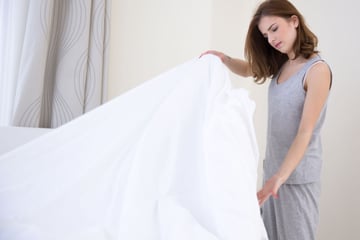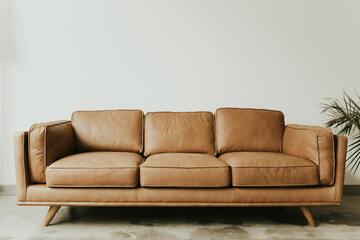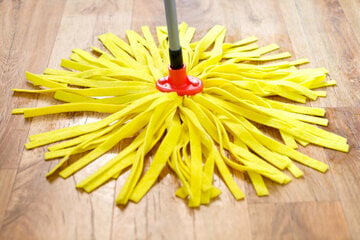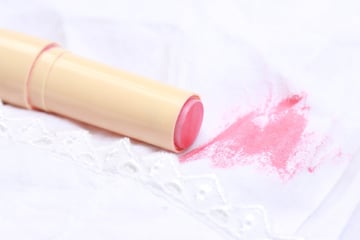How to clean an electric stove top: Home remedies and easy solutions
Every house contains the ingredients needed to effectively and easily clean the stove top. Have you had a bit of cooking accident and it's left a burnt-on residue? Need to know how to clean an electric stove top? We've got a variety of home remedies and solutions.
- How to look after your electric stove top
- Best way to clean a stove top with home remedies
- Cleaning the stove top without home remedies
- How to remove the white spots on a burnt stove
- How to get melted plastic off the stove top
- How to get scratches out of glass stove top
- Easily make your glass stove top shine again
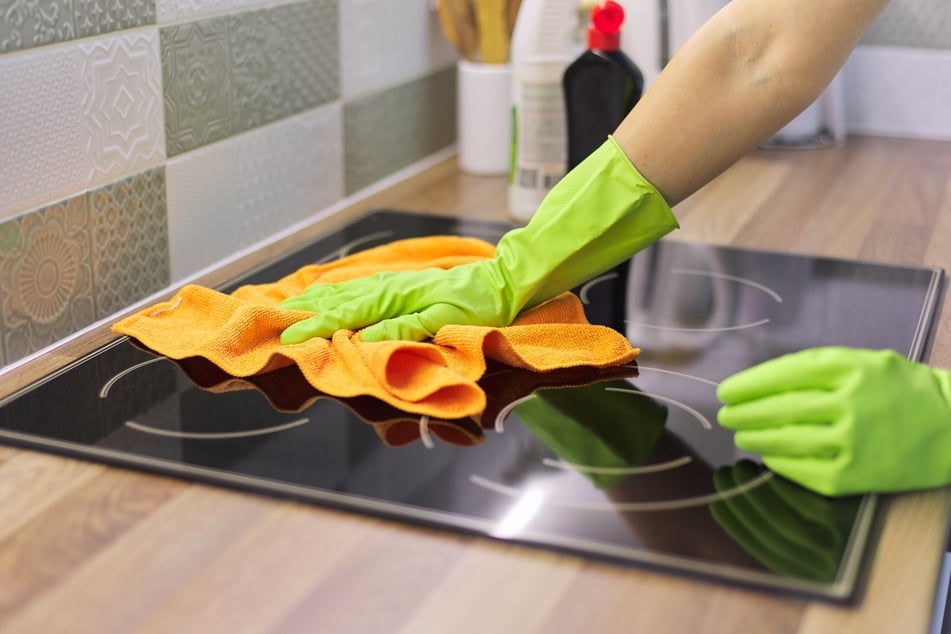
When you're cooking, you're often going to make a mess. Those splashes, little bits of onion and bacon, and spilled water will burn onto the hotplates and stain the top. It's a good idea to remove this burnt-on residue so it doesn't cause problems down the line, but that is sometimes easier said than done.
The longer you leave these stains on the stove top, the harder it's going to be to remove them, changing the situation from one that's actually a piece of cake to resolve to one which could permanently mark the appliance. So, how do you clean an electric glass stove top? Do you need to do splash the cash on special products or can you just use some good old-fashioned soapy water?
In this guide, TAG24 will keep it nice and and simple: all you need to clear that stove top are some basic home remedies. Here's how it works.
Don't have much time? Here's a quick TL;DR:
- Ceramic and glass stove tops can be cleaned with all kinds of different common household products.
- It's important to use soft cloths and suitable tools to avoid scratching the stove top and permanently damaging it.
- Make sure to follow the instructions on the packets of any more intense or corrosive cleaning products.
- Always wear gloves when cleaning the stove top, to protect your skin and eyes as much as humanly possible.
- The cheapest way to clean the stove top is to use home remedies. They can also be quick and effective, and are easily available in almost any house.
How to look after your electric stove top
So you can probably guess that replacing a set of hot plates is really expensive. It's also really avoidable, as long as you take some basic steps to protect and care for your appliance.
Here are some tips for looking after an electric stove top:
- Clean it after every cook: Make sure to clean your stove top after every cook, even if it seems spotless to you. Whether there's a visible mess there or not, it's always good to give the top a thorough scrub every time after it's cooled down.
- Use the right pots and pans: Always use appropriate cookware for your stove top. You'll ruin your pots and pans as well as the hot plate if you don't.
- Moderate the temperature: Does the stove top always need to be on full-blast? Cook with an appropriate temperature and you'll avoid doing things like over boiling pasta water and causing stains.
- Don't put heavy or sharp things on the surface: When you're not cooking, try to avoid putting items on the hot plates. Your stove top is actually quite a delicate beast and will be scratched and cracked if not treated properly.
- A stove top is NOT a chopping board: Chopping boards are for chopping, cook tops are for cooking. Don't mix up the two or you're going to have raw food and a scratched up stove.
- Wash and dry all of your pots and pans before use: Make sure that you've cleaned any pots or pans you use, getting rid of anything impurities on the bottom that might burn onto the stove top. Dry cookware well to avoid water dripping onto the hot surface.
Ultimately, the most important tip that we can give you for taking good care of your stove top is to simply be careful. Don't be reckless, treat the thing with respect, and clean it – that's the secret.
Best way to clean a stove top with home remedies
Even with all the care in the world, though, everyone makes a mess occasionally.
When that happens, maybe you just don't have the right cleaning products and equipment lying around. That's when improvisation really pays off. You're actually surrounded by many home remedies without even knowing it.
Let's get these stove tops clean with simple home remedies!
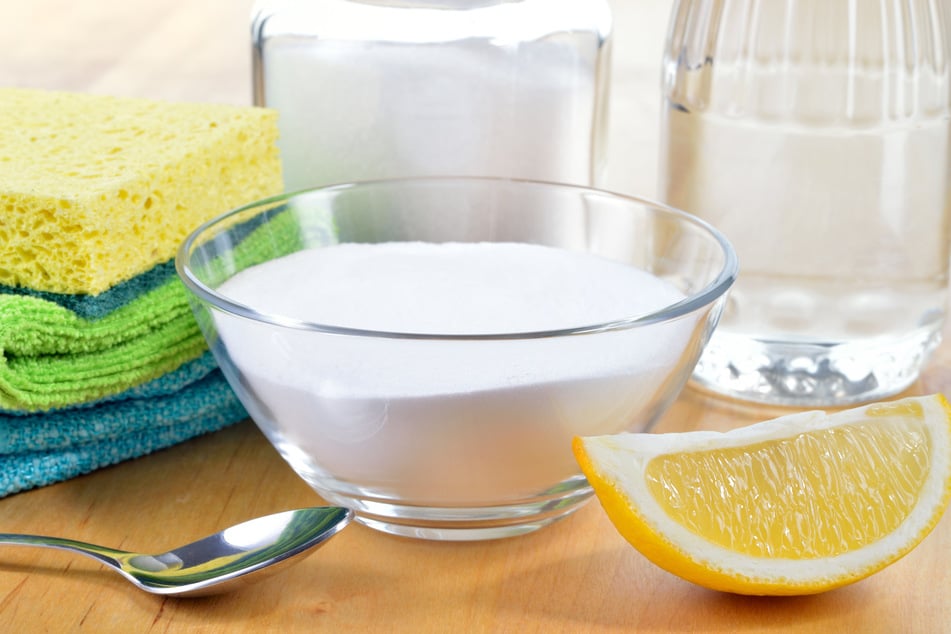
Cleaning a stove top with dishwasher tabs
Throwing the entire stove top in the dishwasher and letting that take care of it isn't an option (yet), but the next best thing is lying right there. Dishwasher tablets are your friend when it comes to removing stains from the hotplates.
Once dissolved with water, these tabs are incredibly powerful solvents that will remove even hardened stains that are burnt onto the surface of the stove top, as well as any stubborn grease.
Here's a step-by-step guide to this simple but effective stove top cleaning method:
Step 1: Crumble up a dishwasher tab, or burst a dishwasher pocket, and mix it with a little bit of warm water to form a paste.
Step 2: Apply this paste to the heavily stained areas of the stove top and let it soak for at least half an hour.
Step 3: Remove the past with a soft cloth and wipe the surface down to remove the residue.
Step 4: Clean thoroughly with a soapy sponge, dry with a tea towel and polish with a microfiber cloth to get it nice and shiny.
Another tip: If you have one of those dishwasher pockets, you might not be able to make a paste with it, as it is already a liquid. In this case, mix it with a little bit of warm water and coat the surface with this solution.
Caution: Make sure to wear gloves when using this cleaning method on your stove top. Dishwasher tabs are highly corrosive and also toxic, and will do nasty things to your skin.
Cleaning a stove top with detergent
This might not exactly be a huge secret, but that doesn't make it any less legitimately effective. After all, detergent's literal purpose is to clean cooking things. It's also incredibly good at dissolving grease and producing a lovely shine, if used right.
Here's how to clean your stove top with detergent:
Step 1: Fill your sink with hot water and detergent, getting it nice and bubbly. Meanwhile, apply detergent directly to the glass or ceramic stove top and rub it in with a dishcloth.
Step 2: Dip a brand-new sponge in the water that's been sitting for about 10 minutes, and then start scrubbing the stove top thoroughly.
Step 3: Continue to scrub with the detergent and water for a while, before washing off all the soap with some clean tap water and a tea towel. Wipe thoroughly and polish with a microfiber cloth.
If dishwashing detergent isn't doing the trick, another great option is a household grease solvent. If you do use this, make sure to work with gloves and wash the stove top thoroughly with detergent and water afterwards.
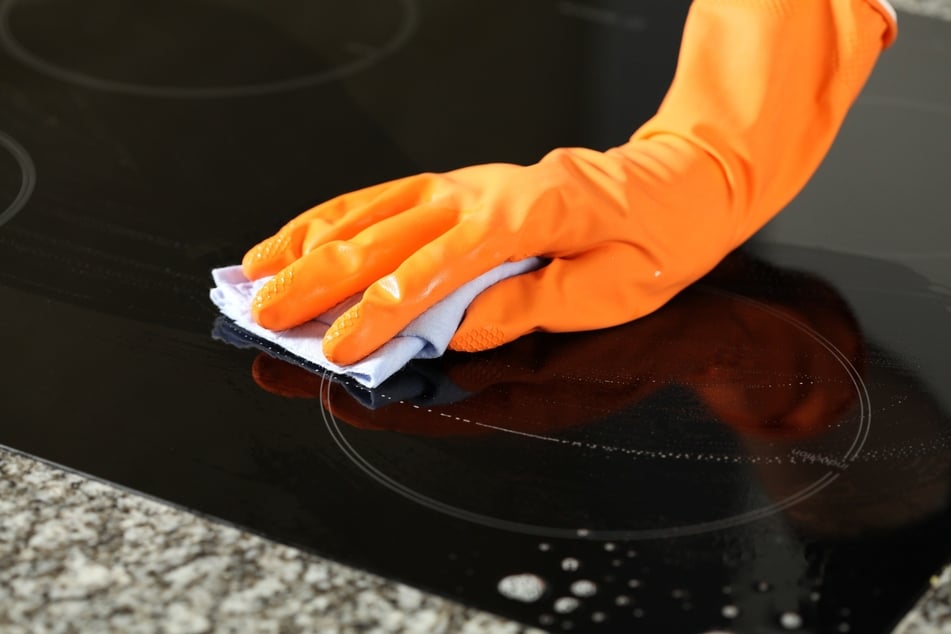
Cleaning a stove top with baking soda
Sodium bicarbonate is legitimately the number one household cleaning miracle. This stuff is perfect for all kinds of adulting, from cleaning leather couches to getting bad smells out of your clothing. There's honestly no point in trying other products a lot of the time, and you should always see if baking soda will work before going for some other overly-complicated method.
How to clean the stove top with baking soda:
Step 1: Mix about 2 ounces of baking soda with a small amount of water in a bowl, so it creates an easily spreadable paste.
Step 2: Apply this paste to the heavily affected areas of your stove top and leave it for at least half an hour (preferably longer).
Step 3: Remove the paste with a soft cloth and rinse the stove top thoroughly.
Step 4: Wipe off the remaining water with a tea towel and then polish the glass or ceramic with a microfiber cloth.
Caution: When using baking soda in cleaning, you will mix it with water. This forms an alkaline solution that can irritate the skin. As a result, remember to wear gloves and keep it away from your eyes.
Cleaning a stove top with vinegar
Vinegar's not just a great ingredient, it's also a fantastic cleaning solution. Stick with white vinegar (not balsamic, which will seriously stain most things it comes into contact with), of course, and you will be able to remove even the worst burnt-on foodstuffs from your glass or ceramic stove top. Just be careful not to use it too often because its acidic nature will slowly corrode away the surface.
Here's how to effectively clean your stove top with vinegar:
Step 1: Mix two tablespoons of baking soda with an equal amount of white vinegar and a little bit of water, creating a pungent and powerful vinegar-baking powder paste.
Step 2: As with straight baking soda, spread this over the effected areas of your stove top and allow it to soak for at least half an hour.
Step 3: Wipe off, rinse, dry, and polish with a microfiber cloth.
Tip: Due to vinegar's incredibly acidic nature, it is perfect for greasy and dirty surfaces. As a result, feel free to clean the bulk head with this solution as well!
Caution: Unlike baking powder, which is good to leave on there for an hour or even more, don't leave the vinegar solution on your ceramic or glass stove top for more than thirty minutes. It could cause a great deal of damage.
Cleaning a stove top with lemon
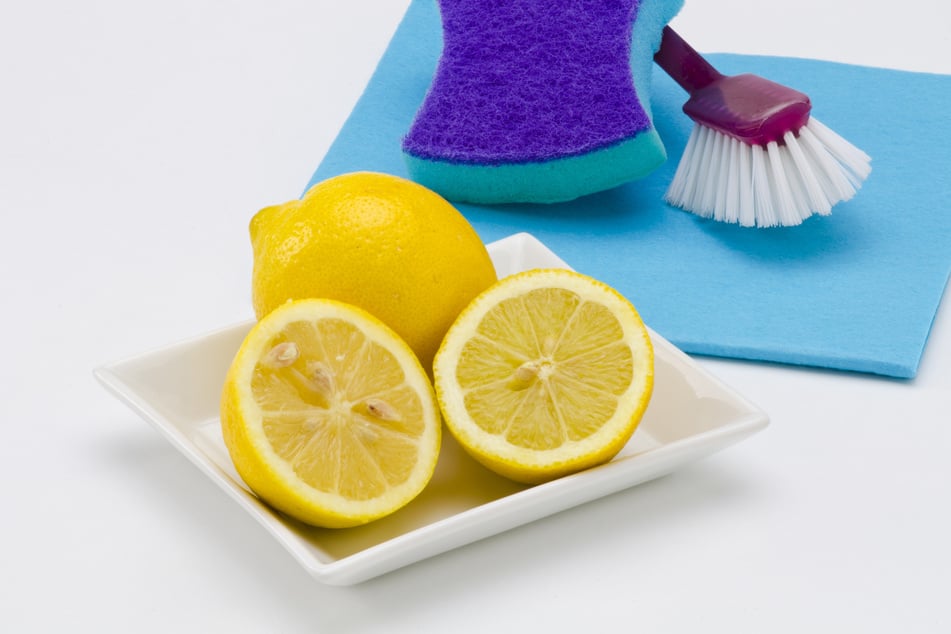
Lemon is acidic in a similar way to vinegar, so it can be used to quite effectively remove watermarks and limescale stains from your stove top. It's not as powerful as vinegar, but it definitely smells a lot better. Now, yes, you can squeeze out a lemon and use the juice, but we'd actually recommend just buying some cheap lemon concentrate for this task.
Here's how to clean your ceramic or glass stove top with lemon:
Step 1: Place your lemon juice on a dry cloth, or directly onto the plate.
Step 2: Rub onto the affected area of your stove top and allow it to soak for a little while.
Step 3: Scrub some more before removing it with plain water, drying with a tea towel, and polishing.
If you use freshly squeezed lemon juice, or halved lemons, make sure that you have removed any seeds that may be in the juice or lemon. These could seriously scratch your stove top!
Hot tip: If you are short on time, just grab yourself a halved lemon and rub the thing onto the ceramic or glass stove top, focusing on the affected areas. You can also use the peels of squeezed lemons if they still have some pulp on them. Try other citrus fruits like oranges or grapefruits.
Cleaning the stove top without home remedies
If none of the home remedies described so far have helped you clean your stove top, it might be time to jump into your car and grab some more conventional cleaning agents and chemicals. There are many options out there, and we're sure that the shop assistant will be more than happy to, well, assist you. That doesn't mean we can't help too, though.
Here are some thoughts on commercial cleaners for your stove:
- Commercial glass cleaner will be great for getting a glass stove top nice and shiny, but is only going to be effective once you have removed the immediate dirt and burns.
- Get yourself a ceramic scraper if you have a ceramic stove top. These are incredibly helpful as they have special carbon steel blades that are great at removing dirty and burnt-on food. Just make sure to check that there are no nicks in the blade, so that it doesn't scratch the stove top.
There are many different sprays and chemicals to try, many of which will work very well. Remember that these cleaners are often very toxic. Wear a face mask just to be safe, and always have a pair of gloves on your hands.
Using oven cleaner to clean a stove top
Oven spray is pretty stellar stuff, and will clean your stove top like nothing else. This spray is extremely powerful and will honestly probably do the job in one easy go.
Here's how to clean your stove top with oven cleaner:
Step 1: Shake the oven spray can and then apply it to the entire ceramic or glass stove top. Wait for the allotted time defined by the instructions on your can, which is usually around 20 to 30 minutes.
Step 2: Remove the sprayed-on foam with a cloth or a tea towel, and then wipe the surface with a sponge and dry it. Give it a good polish too, of course!
One nice thing to try is heating up the hot plates on their lowest setting for a minute or two before spraying the oven cleaner. This is incredibly effective at removing dirt.
Caution: Just like vinegar, oven spray is extremely corrosive and toxic. Follow the instructions on the can and don't leave it on any longer than you need to. Also make sure that you are wearing a mask and gloves.
How to remove the white spots on a burnt stove
White and light gray stains on your stove top are generally harmless, caused from over boiled water or water residue from pots that haven't been properly dried before use. It is important, though, to remove these ugly stains as quickly as humanly possible. Why? Well, they'll burn in during the next cook and will then be insanely hard to get out.
In contrast, it's really easy to remove these white spots as soon as they have appeared. After you have finished cooking and the hot plate has cooled, wipe them off with a wet rag or sponge, a bit of water, and some soap. Dry and polish, as usual.
Fun fact: Shimmering stains in your cook top might actually be metallic deposits from cookware made of iron, aluminum, or copper. These secrete tiny particles into the ceramic or glass stove top, which is then hardened by the heat. You can use a variety of the cleaning methods we have described to fix this problem.
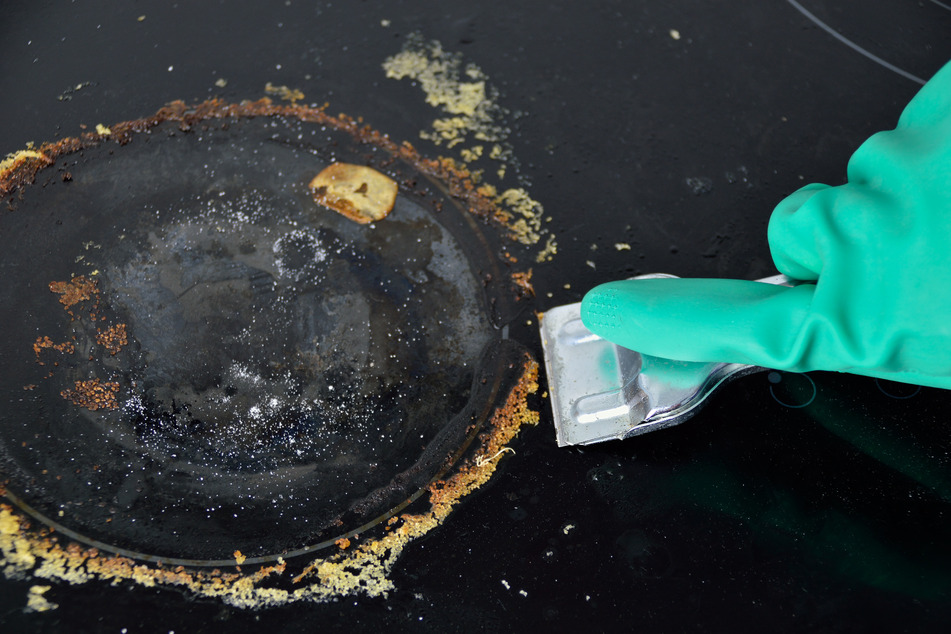
How to get melted plastic off the stove top
It's a horrible moment when you absent-mindedly drop that Ikea plastic spatula – which seems to be present in every household – onto the hot stove top and it melts. The plastic is everywhere, it stinks horribly, and it looks very hard to get out. The most important thing in this situation is acting.
Here's how to deal with melted plastic on your stove top:
Step 1: Switch off the stove top immediately and remove all cooking utensils and foodstuffs.
Step 2: Put on heavy-duty cooking gloves if you can (to protect you from burns). Pick up a wooden spatula and immediately start to scrape off the burning plastic, pushing it off the heat.
Step 3: Open all windows and turn on the exhaust fan. Melted plastic produces noxious gases that you really shouldn't breathe in. Wear a mask if you have one. Continue to remove as much plastic as possible.
Step 4: Once you have done your best, wait for the hot plate to cool down and then proceed to clean the ceramic or glass stove top using one of the methods described above.
It is advisable to have a suitable scraper easily available in your kitchen for these exact situations. Plastic can seriously stuff up your stove top, and they're very expensive to replace, so it's a good idea to be prepared.
How to get scratches out of glass stove top
The solution to scratches in your glass stove top is actually surprisingly simple – toothpaste. This is an excellent and very gentle polishing agent that is suitable for all sorts of different scratches. Toothpaste will fix scratches in glass, ceramic, and even wood. Give it a go!
Make sure that you wipe off any remaining toothpaste residue before you use your ceramic or glass stove top again. If you don't, the toothpaste could burn onto the surface and cause more problems than it solved.
Easily make your glass stove top shine again
When cleaning your glass or ceramic stove top, you want to make your time worth it. How do you do that? Well, mostly by looking after it once you're done. If you maintain your stove top, then you won't have to waste so much time cleaning.
Keep these things in mind:
- Always allow your hot plates to cool before you clean them. Don't get yourself burnt!
- Remove any coarse soiling from foodstuffs as quickly as possible.
- Treat grease stains with the appropriate measures described above, and make sure to remove any oil slicks before using the hot plates again.
- Never use hard objects or scouring agents when cleaning, as these will attack the glass or ceramic and cause a lot of damage.
Get yourself a few great cleaning agents, try out some of that oven cleaner, and get scrubbing if you want to keep your stove top in good shape for a long time to come.
Cover photo: 123RF / Valerii Honcharuk
